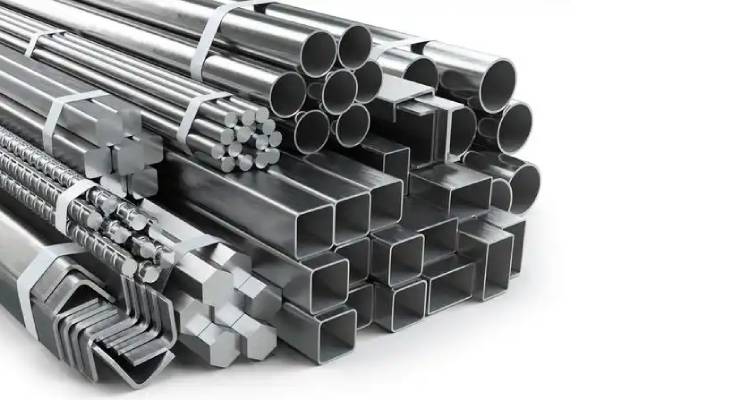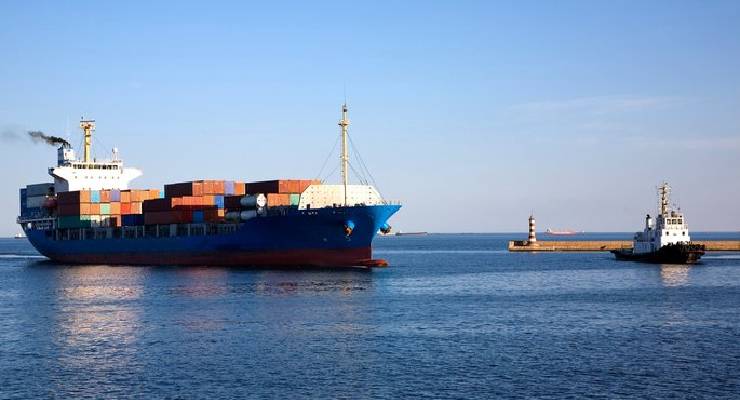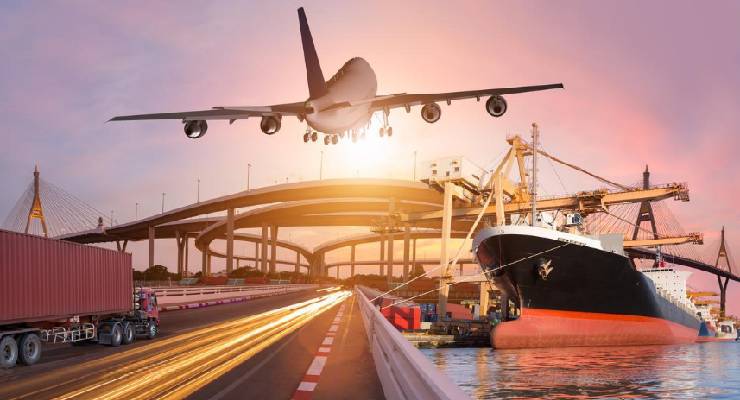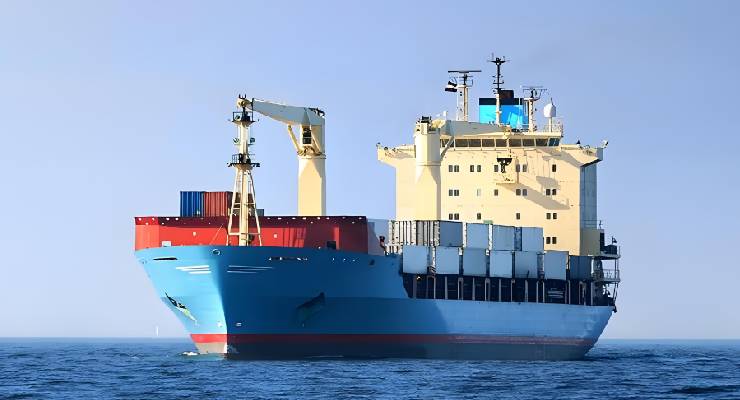
China stands as the world’s top steel producer, accounting for approximately 50% of global production. This status makes China a key player for businesses looking to import steel materials. This guide is designed to help you effectively navigate the complexities of importing and shipping steel from China, ensuring a smooth process from start to finish.
What are the Benefits of Importing Steel from China
· Cost-Effectiveness: China’s large-scale production leads to lower costs, offering a price advantage.
· High-Quality Standards: Chinese steel manufacturers adhere to rigorous production protocols to ensure top quality.
· Variety: From basic carbon steel to advanced alloys, China offers a wide array of products.
· Integrated Supply Chain: The entire process from production to delivery is smoothly coordinated, ensuring efficiency and reliability.
Key Classifications of Steel Materials
Understanding the types of steel is crucial for making informed purchasing decisions. Here are the primary classifications:
· Carbon Steel: Comprising iron and carbon, this type is segmented into low, medium, and high carbon steel based on the carbon percentages.
· Stainless Steel: With a minimum of 10.5% chromium, this category is celebrated for its resistance to corrosion. Common varieties include grades 304, 316, and 430.
· Alloy Steel: This type enhances carbon steel by adding elements like manganese and nickel, boosting its performance for use in sectors like automotive and aerospace.
· Tool Steel: Known for its durability and resistance to abrasion, it is used in making tools, molds, and dies.
· Structural Steel: This is primarily used in building infrastructure such as bridges and towers due to its strength and weldability.
Explain how to Import Steel and Steel Materials from China in 5 steps
China is a global leader in steel production, accounting for approximately 50% of the world’s output. Importing steel from China can be a lucrative venture if done correctly, but it requires a thorough understanding of the market, suppliers, and regulations. Here’s a step-by-step guide to ensure a successful import process.

Step 1: Locate Reliable Chinese Steel Suppliers
Finding a trustworthy supplier is crucial for the success of your import business. Here’s how you can identify the best steel suppliers in China:
Online B2B Marketplaces:
Utilize platforms like Alibaba, Global Sources, and Made in China to find and compare steel suppliers. These platforms offer insights into the company’s history, product range, and customer reviews.
Industry Trade Shows:
Attending industry-specific expos can provide direct access to numerous suppliers and products. Key expos to consider include:
· China International Stainless Steel Industry Exhibition held annually in Shanghai.
· Metal + Metallurgy China, one of the largest expos in the region focusing on metal processing.
For more detailed information on upcoming expos, check directories like EventsEye or 10Times.
Step 2: Navigate Import Duties and Trade Regulations
Import Duties:
Understanding the duty structure in your home country is essential. For EU importers, the TARIC database provides detailed information on tariffs. In the US, the USITC Tariff Database offers insight into import duties and restrictions.
Trade Compliance:
Ensure compliance with international trade regulations, which may include anti-dumping laws aimed at protecting domestic industries. These laws can significantly influence the cost and feasibility of imports.
Step 3: Ensure Quality and Compliance
Quality Control:
Implement stringent quality checks. Consider hiring third-party inspection services to verify product quality before shipment. This can include visual inspections, lab testing, and compliance checks.
Certifications:
Verify that the products meet all relevant standards and certifications required by your country. Common certifications include ISO standards, CE marks for Europe, and ASTM standards for the US.
Step 4: Manage Logistics Efficiently
Shipping Arrangements:
Decide between FOB (Free on Board) and CIF (Cost, Insurance, and Freight) terms based on what best suits your risk and budget preferences.
Customs Clearance:
Work with experienced customs brokers to ensure smooth clearance of your goods upon arrival in your country. They can help navigate the complexities of customs regulations and prevent any unforeseen delays.
Step 5: Build Long-Term Supplier Relationships
Communication:
Maintain open and consistent communication with your suppliers. Understanding cultural nuances and business practices can help in building strong, long-term partnerships.
Visits and Audits:
Regular visits to your supplier’s facilities can strengthen relationships and provide insights into their operational processes and capabilities.
This guide provides a structured approach to importing steel from China, covering essential aspects from supplier selection to logistics and compliance. By following these steps, you can mitigate risks and maximize the profitability of your import business.

Requirements to Import Steel from China
When you’re planning to import steel from China, understanding and fulfilling the specific import documentation and customs clearance requirements is crucial. These requirements are dictated by the foreign trade policy of the importing country and must be managed by the importer or their appointed customs broker.
Importing Steel from China: Key Documents and Procedures
To successfully import iron and steel from China, you must gather a set of essential documents and adhere to the necessary import procedures. Here’s what you need to prepare:
· Bill of Lading/Air Waybill: These documents are vital for tracking the shipment, whether it comes by sea or air.
· Commercial Invoice: Issued by the exporter, this document details the transaction between the buyer and seller.
· Packing List: Provides information on the packed contents of the shipment.
· Certificate of Origin: This document verifies the country in which the goods were manufactured.
Shipping Steel Materials from China
· Select a Shipping Method: Choose between sea, air, or land freight based on the volume, weight, and urgency of your shipment.
· Arrange Logistics: Work with your supplier to handle shipping logistics, including packaging and insurance.
· Track Shipment: Utilize tracking systems provided by freight forwarders to monitor your shipment’s progress.
· Customs and Delivery: Complete customs clearance at the destination and arrange for the pickup and transportation of the steel to your facility.
Cost Considerations for Shipping
Shipping costs can vary significantly based on several factors such as shipment size, distance, and additional services like insurance. It is vital to obtain and compare quotes from different shipping companies to find the most cost-effective solution.
By following this guide, you can streamline the process of importing and shipping steel from China, ensuring you receive high-quality materials while optimizing costs and logistics.
How to Avoid Scams While Importing Steel materials from China
When importing steel from China, it’s crucial to safeguard your investments against common scams. Many fraudulent entities on platforms like Alibaba may pose as legitimate suppliers, only to take your payment and fail to deliver the goods. To ensure you’re dealing with reliable suppliers, here are two essential verification steps you should follow:
Verify Your Supplier
Before committing to any transactions, thoroughly vet your potential suppliers. Using a sourcing company, such as Asiaction, can be very beneficial. They specialize in factory audits to confirm the legitimacy and reliability of suppliers before you proceed with any business dealings. This proactive measure significantly reduces your risks and provides clarity on the credibility of your prospective business partners.
Factory Audit
Conducting a factory audit is a crucial step. This process involves creating a comprehensive report based on an inspector’s visit to the factory, providing you with detailed information about the supplier’s operations and quality standards.
Control Your Goods in China
Quality control is essential before your steel shipments leave China. Make sure that all products meet your specific requirements. If you wait until the goods arrive at your premises, it will be too late for any necessary adjustments. Services like those offered by Asiaction can perform these quality checks to ensure that only products that pass your standards are shipped. This step helps you maintain the quality of the steel and address any defects right at the source.
By following these steps, you ensure that your steel imports from China are secure, high-quality, and free from the common pitfalls of international trade scams.
For the transportation of electrical appliances, our Winsail Logistics is very experienced, the following is our out of the goods, you can understand:
Air Freight ALLOY WHEEL From PEK To DXB
Ocean LCL Freight Service ELECTRIC WINCH From CHINA To UAE
Door To Door By Air Freight CARBIDE ROTARY FILE From China To DAMMAM
Ocean LCL Freight Service INCONEL From China To CHENNAI
Ocean Freight Service STEEL PLATE From CHINA To KENYA
-
 A Comprehensive Guide to Refrigerated ContainersJun 17,2025
A Comprehensive Guide to Refrigerated ContainersJun 17,2025 -
 Guide to 20ft & 40ft Shipping Container Dimensions for Global LogisticsJun 17,2025
Guide to 20ft & 40ft Shipping Container Dimensions for Global LogisticsJun 17,2025 -
 How to track shipments sent from ChinaMay 13,2025
How to track shipments sent from ChinaMay 13,2025 -
 Guide to Importing and Shipping Cars from China to UAEMay 13,2025
Guide to Importing and Shipping Cars from China to UAEMay 13,2025 -
 Guide to Importing and Shipping Camping Gear from ChinaMay 07,2025
Guide to Importing and Shipping Camping Gear from ChinaMay 07,2025 -
 Shipping from China to YemenMay 06,2025
Shipping from China to YemenMay 06,2025

